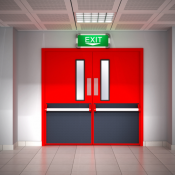
What is CDM? Construction (Design and Management) Regulations 2015 Explained
A Guide to the Construction (Design and Management) Regulations 2015.
In the construction industry, ensuring safety at every stage of a project is not just good practice, it’s a legal requirement. The Construction (Design and Management) Regulations, commonly referred to as CDM, are the legal framework in the UK that govern health, safety, and welfare on construction sites.
Whether you’re a client, designer, contractor, or facilities manager, understanding CDM is essential to staying compliant and managing risk.
What are CDM Regulations?
CDM stands for Construction (Design and Management) Regulations. These regulations are designed to improve health and safety in the construction sector by defining responsibilities, enforcing proper planning, and ensuring that risk is managed at all stages of a project.
The Purpose of CDM Regulations
The regulations aim to ensure that health and safety is considered at every phase of a construction project, not just on site. By placing legal duties on everyone involved, from clients to contractors, CDM promotes cooperation, communication, and planning to reduce the likelihood of accidents and occupational ill-health.
CDM 2015: Key Changes from Previous Regulations
The current version, CDM Regulations 2015, came into force on 6 April 2015 and replaced the 2007 version. Key changes included:
• Removal of the CDM Coordinator role, replaced by the Principal Designer
• Inclusion of domestic clients — CDM now applies to domestic works
• A greater emphasis on the client’s responsibility to manage and oversee safety
• A more streamlined approach to required documentation
• Broader definition of construction work, extending CDM’s scope
These changes aimed to simplify compliance while maintaining high standards of safety.
Who Do CDM Regulations Apply To?
CDM applies to all construction work, regardless of size or duration. The regulations identify a number of key duty holders, each with specific responsibilities:
• Clients
• Principal Designers
• Designers
• Principal Contractors
• Contractors
• Workers
Understanding and fulfilling these roles is essential for legal compliance and project safety.
How to Stay Compliant with CDM
To comply with CDM Regulations, all duty holders must:
• Appoint competent people in writing
• Ensure a Construction Phase Plan is in place before work begins
• Share relevant information and ensure proper coordination between parties
• Monitor and review health and safety performance
• Keep proper documentation, including risk assessments and method statements
Compliance isn’t just about ticking boxes, it’s about actively managing risk.
Appointing a Principal Contractor in Writing
Under CDM 2015, when a project involves more than one contractor, the client has a legal duty to appoint a Principal Contractor in writing. This applies whether or not the work is notifiable to the HSE.
The Principal Contractor is responsible for planning, managing, and monitoring health and safety during the construction phase. Although the appointee does not have to formally accept the appointment in writing, the legal duty still rests with the client to issue it.
This requirement often applies even on smaller or lower-risk projects, and is especially important in sectors such as facilities management, where multiple contractors may be working across planned maintenance tasks.
Notifiable Works and F10 Submissions to the HSE
Some construction projects are considered notifiable under CDM. This means the client must notify the HSE using an F10 form before work begins.
A project is notifiable if it:
• Lasts more than 30 working days and has 20 or more workers working simultaneously at any point
• OR exceeds 500 person-days of construction work
However, a common misconception is that if a project isn’t notifiable, CDM doesn’t apply.
This is not true.
Even non-notifiable projects must:
• Comply fully with CDM
• Include a written appointment of the Principal Contractor (if more than one contractor is involved)
• Have a Construction Phase Plan in place
The Construction Phase Plan
The Construction Phase Plan is a legally required document for every construction project, regardless of its size or whether it is notifiable.
This plan should include:
• The nature and scope of the work
• Key risks and how they will be managed
• Site rules and arrangements for communication
• Emergency procedures
• References to supporting documents such as risk assessments and method statements
For smaller projects, the Construction Phase Plan can be kept simple. It may serve primarily as a signposting document, directing site workers to where relevant safety information is stored or how it will be communicated.
The Principal Contractor is responsible for preparing and updating this document before any work begins.
CDM and Facilities Management
The 2015 revision of the CDM Regulations expanded the definition of construction work, meaning that many activities traditionally seen as facilities management (FM) now fall within CDM.
This includes:
• Reactive and planned maintenance
• Infrastructure upgrades
• Installation or replacement of systems (e.g. HVAC, lighting, water systems)
Even when these works are relatively small and non-notifiable, CDM still applies if more than one contractor is involved. This means:
• A Principal Contractor must be appointed in writing
• A Construction Phase Plan must be prepared
• The client retains legal responsibility for ensuring compliance
Some FM companies have even submitted an overarching F10 form to the HSE for their entire Planned Preventive Maintenance (PPM) schedules, although this is uncommon and generally unnecessary unless thresholds are exceeded.
CDM Responsibilities by Role
A brief summary of duty holders and their responsibilities:
Clients
• Make suitable arrangements for managing the project
• Appoint duty holders in writing
• Provide pre-construction information
• Ensure sufficient time and resources are allocated
Principal Designers
• Plan, manage, and monitor the pre-construction phase
• Coordinate with other designers and duty holders
Principal Contractors
• Prepare the Construction Phase Plan
• Manage health and safety on site
• Coordinate subcontractors and site rules
Contractors
• Plan their work safely
• Cooperate with the Principal Contractor
• Ensure workforce is trained and competent
Workers
• Follow site rules and procedures
• Report hazards and unsafe practices
Conclusion
The CDM Regulations are a critical part of maintaining health and safety in the UK construction industry. Whether you’re managing a large-scale build, a minor refurbishment, or a facilities maintenance schedule, understanding and applying the CDM framework is essential.
By planning properly, appointing the right duty holders, and maintaining clear documentation, duty holders can reduce risk, meet legal obligations, and deliver safer projects.
Get Expert Help with CDM Compliance
If you’re commissioning construction or maintenance works and want to ensure compliance with CDM, we’re here to help.
👉 Browse our verified Construction Health & Safety Consultants
👉 Submit a project enquiry and get matched with an expert
From reviewing responsibilities to preparing Construction Phase Plans, our network of consultants can guide you through the CDM process with clarity and confidence.



